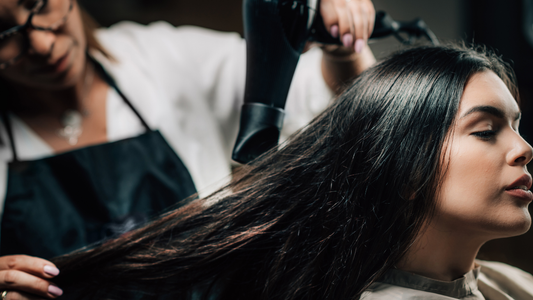Keratin treatments, such as the Kera Mane Keratin Hair Treatment, have revolutionized the way we manage and care for our hair. By delving into the science of how keratin bonds to hair at the molecular level, we can better understand why these treatments are so effective and why the application technique plays a crucial role in the success of the treatment. This comprehensive guide explores the intricate science behind keratin bonding and sheds light on the best practices for application to ensure optimal results.
Understanding Keratin and Its Role in Hair Health
1. What is Keratin?
- Basic Definition: Keratin is a fibrous protein that is a key structural component in hair, skin, and nails. In hair, keratin's primary function is to protect and strengthen the hair shaft from damage.
- Composition: Hair keratin is composed of a sequence of amino acids that form strong disulfide bonds and a helical structure, providing resilience and shape to the hair.
How Keratin Treatments Work at the Molecular Level
1. Interaction with Hair Structure:
- Penetration and Coating: When a keratin treatment is applied to the hair, the liquid keratin formula penetrates the hair cuticles (the outermost layer of the hair) and fills in the porous parts of the hair shaft. This process helps to repair, smoothen, and straighten the hair.
- Bond Formation: The key to the treatment's effectiveness lies in the bonding of keratin molecules with the natural keratin present in the hair. This is achieved through the use of heat, which changes the keratin's structure and enables it to bond securely with the hair's natural keratin.
2. Role of Heat in Keratin Bonding:
- Heat Activation: After the application of the keratin solution, heat is applied using a flat iron. The heat activates a chemical reaction known as thermal reconditioning. This process rearranges the disulfide bonds in the hair's natural keratin, allowing the added keratin to integrate and bond at a molecular level.
- Sealing the Cuticle: The heat also helps to seal the hair cuticles, locking the keratin inside the hair shaft and leaving the hair smooth, shiny, and frizz-free.
Why Application Technique Matters
1. Even Distribution:
- Importance of Uniform Application: For keratin treatments to be effective, the keratin must be evenly distributed across all hair strands. Uneven application can lead to patchy results, where some areas are smoother and straighter than others.
- Technique Tips: Using the right amount of product and sectioning the hair meticulously are crucial steps in achieving an even distribution. Each section should be thinly divided and thoroughly coated with the treatment before heat is applied.
2. Optimizing Product Penetration:
- Deep Penetration Needed: The effectiveness of a keratin treatment also depends on how deeply the keratin can penetrate the hair shaft. Proper technique ensures that the product reaches deeper layers of the hair, maximizing the strengthening and smoothing effects.
- Application Method: Brushing the treatment onto the hair and using a fine-tooth comb can help push the keratin deeper into the hair cuticles.
Conclusion
The science of keratin bonding to hair reveals why keratin treatments like Kera Mane are so effective in transforming hair health and appearance. Understanding the molecular interactions helps us appreciate the importance of correct application techniques, which ensure that the keratin bonds effectively and uniformly across the hair. By adhering to these scientific principles and applying the treatment correctly, users can achieve the full benefits of their keratin treatment, enjoying smoother, stronger, and more manageable hair.




